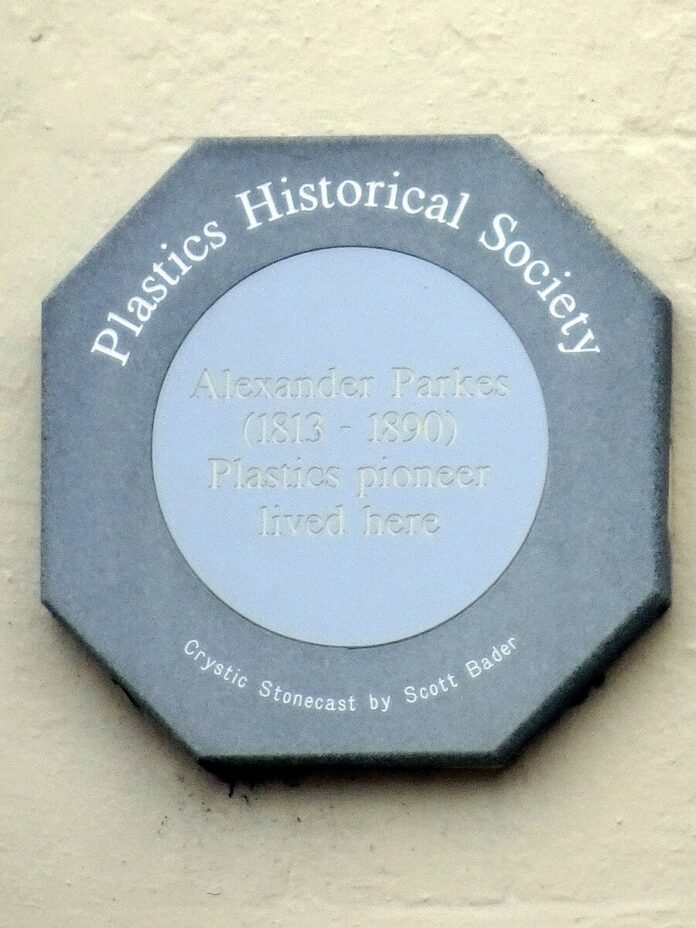The invention of plastics revolutionised the modern world, providing us with an array of versatile and durable materials. However, few are aware of the origins of this incredible substance. In the mid-19th century, a British inventor named Alexander Parkes introduced the world to the first-ever synthetic plastic called “Parkesine.” This groundbreaking invention laid the foundation for the development of the plastics industry and set the stage for a global revolution in material science.
The Birth of Parkesine
Born on December 29, 1813, in Birmingham, England, Alexander Parkes was a skilled inventor and a visionary ahead of his time. A metallurgist and a chemist by trade, Parkes dedicated his life to discovering new materials and improving existing ones. His groundbreaking creation, Parkesine, marked a turning point in the history of human innovation.
Parkesine was the result of Parkes’ tireless experimentation with natural materials such as cellulose and rubber. In 1855, after years of research, he successfully produced the first thermoplastic substance capable of being moulded when heated and retaining its shape once cooled. Parkesine was a semi-transparent material that could be moulded into various shapes and forms, making it ideal for a wide range of applications.
Properties and Applications
Parkesine possessed several remarkable properties that set it apart from traditional materials of the time. It was lightweight, durable, and resistant to many chemicals. Moreover, it could be easily coloured and was less prone to breakage than materials like glass or porcelain. Parkesine opened up a world of possibilities, offering an alternative to expensive and fragile materials.
The applications of Parkesine were diverse. It found use in the manufacturing of buttons, combs, jewellery, and other fashion accessories. The material’s ability to mimic ivory, tortoiseshell, and other expensive materials made it particularly popular in the production of decorative items. Parkesine also played a crucial role in the development of electrical insulators, as it provided an excellent non-conductive material for wiring systems.
The Commercial Journey
Parkes patented his invention in 1862, establishing the Parkesine Company in Hackney Wick, London, to produce and sell Parkesine products. Despite early success, the company faced financial difficulties, and Parkes himself had to give up control due to mounting debts. However, his invention did not fade away.
The patents and manufacturing rights for Parkesine were acquired by Daniel Spill, who formed the Xylonite Company in 1869. Renaming Parkesine as Xylonite, Spill improved the manufacturing processes and expanded the product line. Xylonite gained popularity and found applications in various industries, including photography, toys, and household items.
Legacy and Impact
Although the Xylonite Company faced its own struggles in the late 19th century, the legacy of Parkesine lived on. The groundwork laid by Alexander Parkes set the stage for future developments in the field of synthetic plastics. Inspired by Parkesine, other inventors further refined the manufacturing processes and experimented with new materials, eventually leading to the birth of modern plastics.
Today, plastics have become an integral part of our daily lives. From packaging materials to medical devices, from automobile components to electronic gadgets, the impact of Parkesine’s invention is immeasurable. It revolutionised industries, provided affordable alternatives to scarce resources, and fueled technological advancements across the globe.
Alexander Parkes, with his pioneering invention of Parkesine, reshaped the world of materials and laid the foundation for the modern plastics industry. His innovative spirit and relentless pursuit of new materials opened the door to a world of possibilities and forever changed the course of human history. As we marvel at the multitude of plastic products around us, it’s important to remember the legacy of Alexander Parkes and his revolutionary creation, Parkesine, which sparked a revolution in material science.

